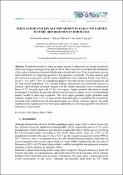Options
Gold and Silver Qiyas Comparison in Zakat on Earned Income Distribution in Indonesia
Date Issued
2023
Author(s)
Nurfatimah Amany
Rayyan Hasnan
Asma Taqiyyah
DOI
10.33102/iiecons.v10i1.137
Abstract
Wealth distribution by zakat on earned income is affected by the nishab (threshold), which can be qiyas (analogized) by gold or silver. This study aims to compare the distribution of this zakat in Indonesia obtained with the qiyas of gold and silver. This research uncovers the zakat distribution by integrating qualitative and quantitative methods. The data used are gold and silver prices per gram and the income distribution from Indonesia Family Life Survey waves 2, 3, 4, and 5. There is a significant disparity between the low-income population and the high-income population. The research findings demonstrate an exponential increase in potential zakat amounts collected, aligned with the nishab thresholds, with a multiplication factor of 2.5 for gold qiyas and 2.9 for silver qiyas. Despite potential decreases or steady percentages of muzakki, the growing zakat amounts positively impact society by redistributing surplus wealth to deserving recipients. The silver qiyas generates higher potential zakat amounts, ranging from 1.5 to 2.2 times greater than gold qiyas. Considering the potential for increased zakat collection and its subsequent impact on various economic aspects, this study emphasizes the significance of diverse qiyas approaches in achieving equitable and effective utilization of zakat funds
Subjects
File(s)
Loading...
Name
Gold and Silver Qiyas Comparison in Zakat on Earned Income Distribution in Indonesia.pdf
Size
810.27 KB
Format
Adobe PDF
Checksum
(MD5):1485a86556e175d0300271095a685efd